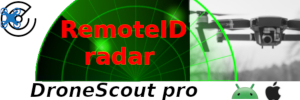(Just chiming in..)
AFAIK, the feds consider VLOS to be precisely what the acronym stands for, Visual Line Of Sight. So IMHO, if you have strobes on the aircraft and you can see the strobes from the home point, you are in VLOS. It has nothing to do with depth perception at distance.
Hopefully you are correct, a lot (including me) are relying on strobes to give us a bit of freedom to fly FPV at times.
Let's face it, ou often don't need to be very far from your bird to lose sight of it.
But, think about it, why is VLOS important ?
You need to be able to see what's near your drone, what dangers you could be approaching / have approaching, and be able to react (land) immediately to avoid whatever it is.
You simply can't see that well at a mile or more, nor can you land (in general) as you'd lose wireless as you get too low, and the blasted thing would start RTH (or hover, or go into forced landing) with who knows what consequences.
Granted the risks are usually low for careful pilots, but the number of drones in the skies will only get higher, and odds are there will be more incidents or near misses due to that fact alone.
I think there are places you can 'get away with it' to some degree, but it you REALLY think about it, unless very remote with little risk of light plane / heli action happening . . . well, it's a gamble every time you are too far from the drones position to really be in control in such circumstances.











